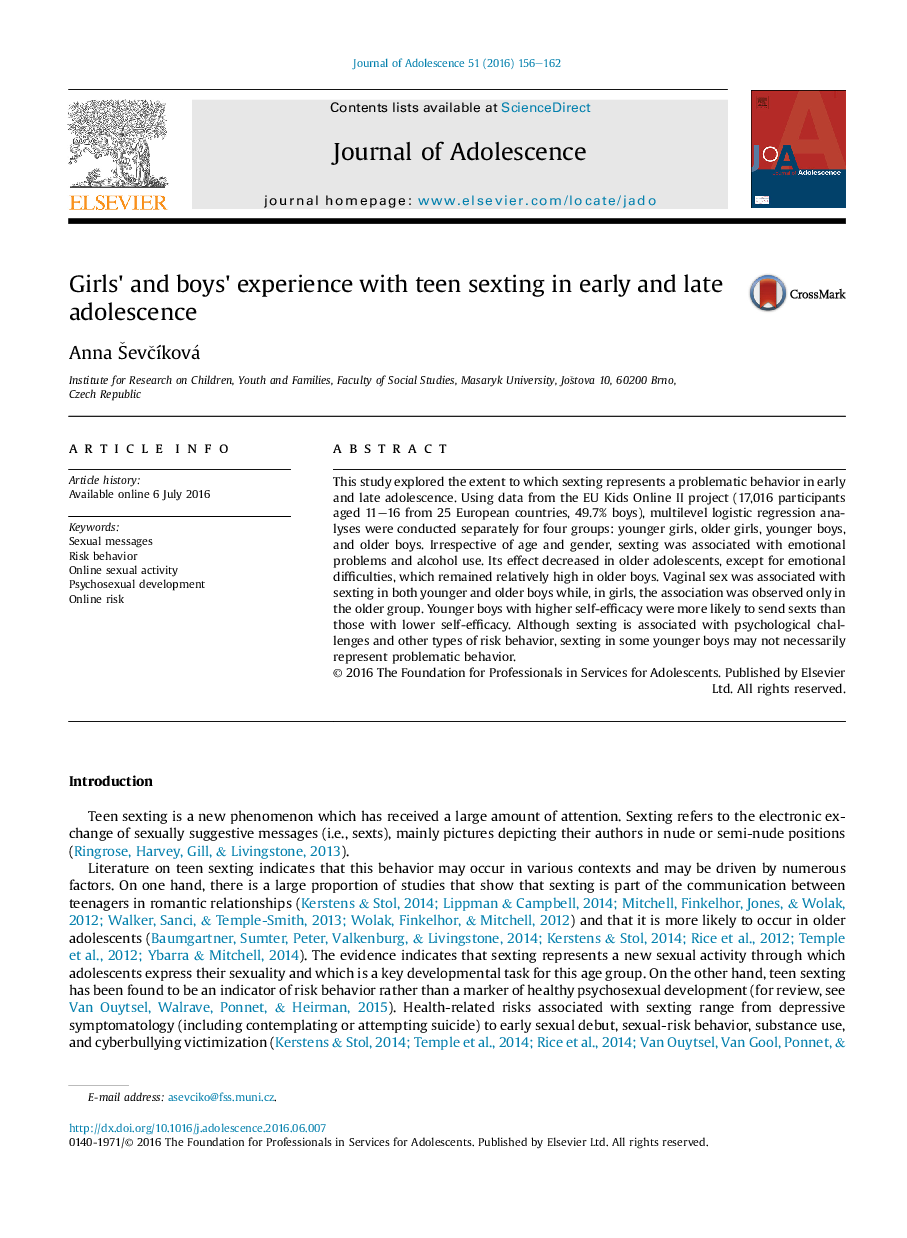| Article ID | Journal | Published Year | Pages | File Type |
|---|---|---|---|---|
| 880560 | Journal of Adolescence | 2016 | 7 Pages |
This study explored the extent to which sexting represents a problematic behavior in early and late adolescence. Using data from the EU Kids Online II project (17,016 participants aged 11–16 from 25 European countries, 49.7% boys), multilevel logistic regression analyses were conducted separately for four groups: younger girls, older girls, younger boys, and older boys. Irrespective of age and gender, sexting was associated with emotional problems and alcohol use. Its effect decreased in older adolescents, except for emotional difficulties, which remained relatively high in older boys. Vaginal sex was associated with sexting in both younger and older boys while, in girls, the association was observed only in the older group. Younger boys with higher self-efficacy were more likely to send sexts than those with lower self-efficacy. Although sexting is associated with psychological challenges and other types of risk behavior, sexting in some younger boys may not necessarily represent problematic behavior.
